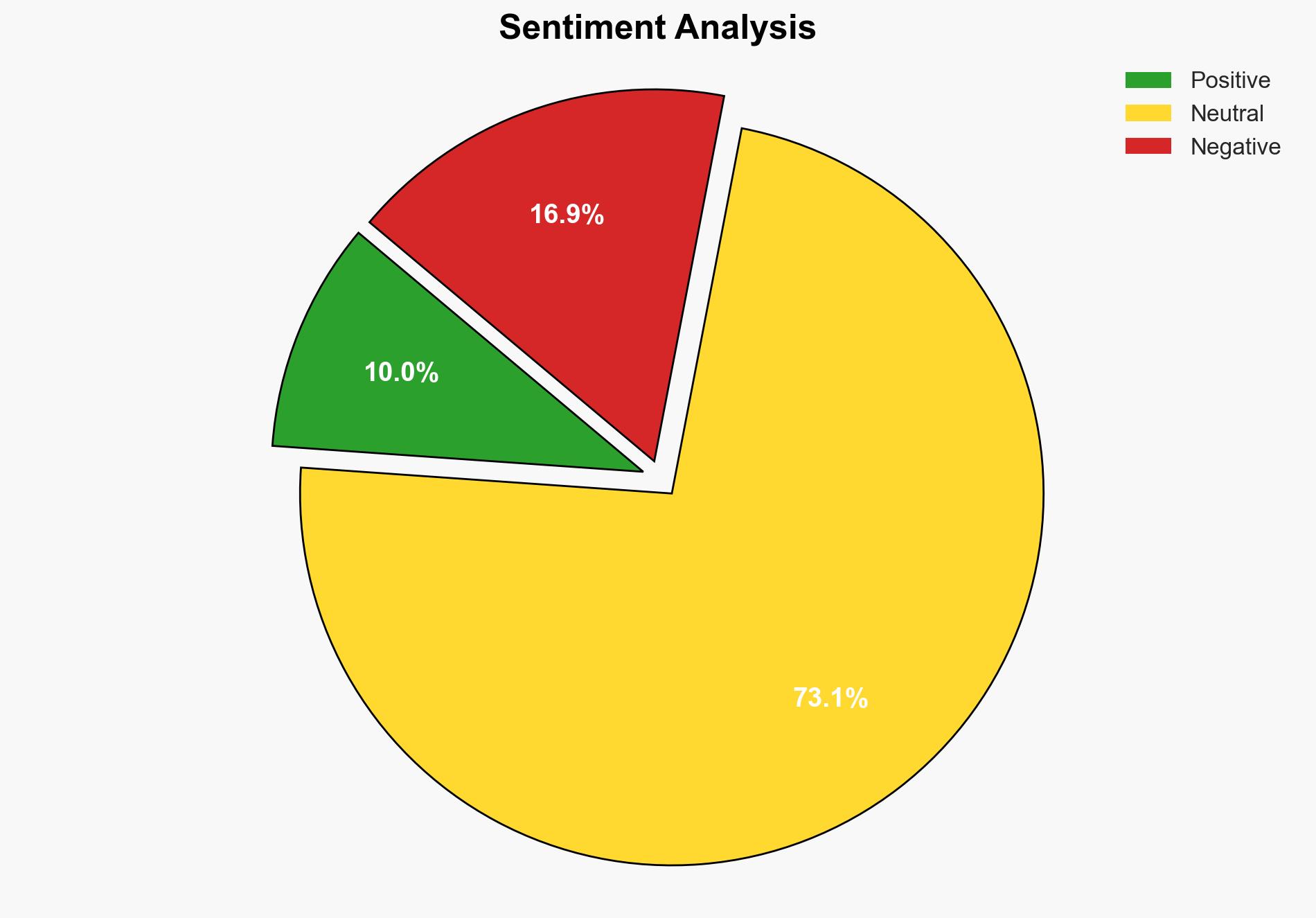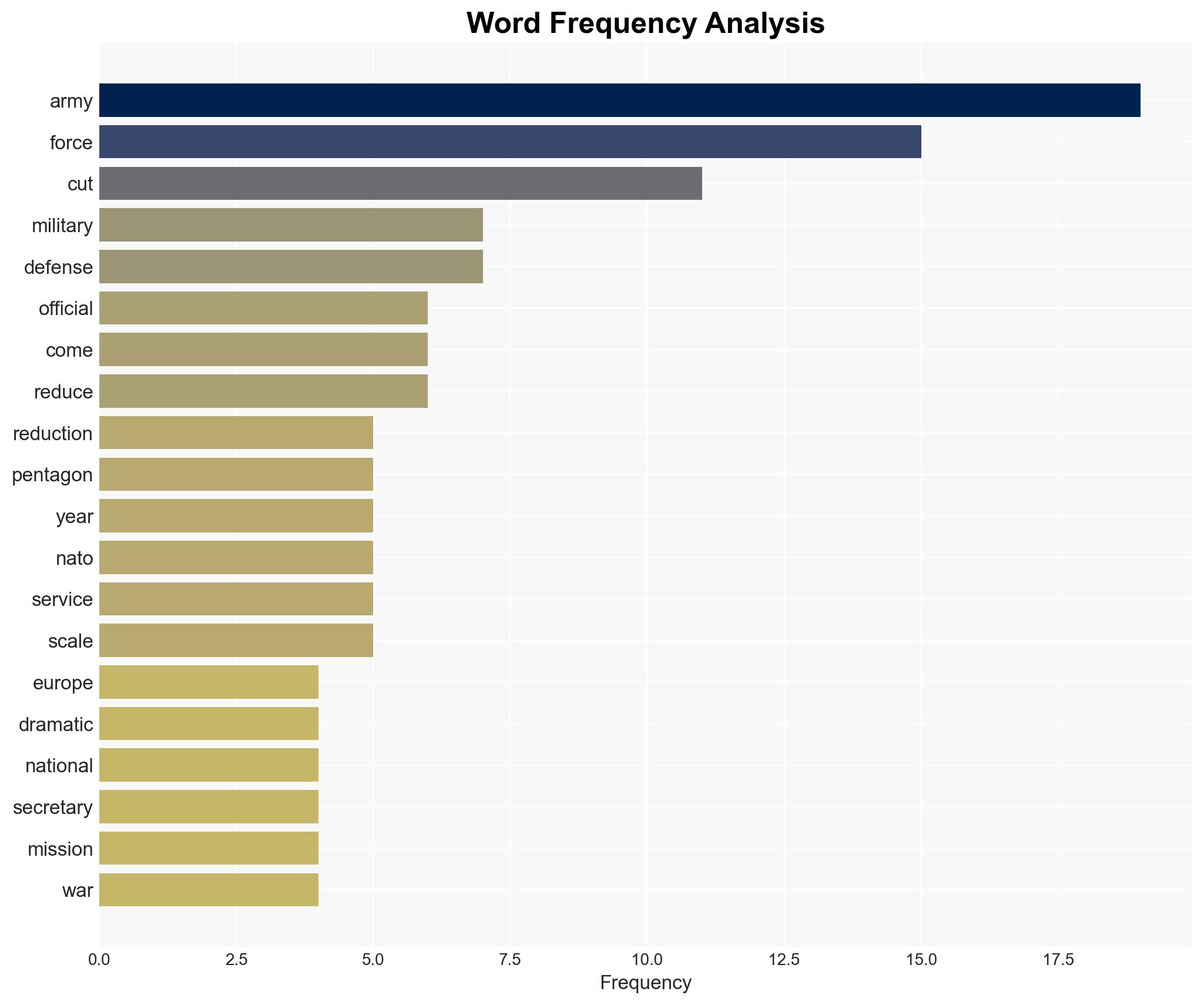ARMY Weighs Cutting Up to 90000 Active-Duty Soldiers – Military.com
Published on: 2025-04-04
Intelligence Report: ARMY Weighs Cutting Up to 90000 Active-Duty Soldiers – Military.com
1. BLUF (Bottom Line Up Front)
The U.S. Army is considering a significant reduction of up to 90,000 active-duty soldiers. This potential cut is driven by fiscal pressures and a strategic pivot away from conventional military engagements in Europe and counterterrorism operations. The proposed reduction aims to create a more agile and specialized force to address future conflicts. However, this move could exacerbate recruitment challenges and impact the Army’s ability to fulfill its current global commitments.
2. Detailed Analysis
The following structured analytic techniques have been applied for this analysis:
General Analysis
The Army’s deliberation on reducing its active-duty force underscores a shift in military strategy, reflecting broader defense priorities. The potential reduction aligns with efforts to reallocate resources towards the Air Force and Navy, focusing on countering strategic threats from China and Russia. The Army’s current roles in counterterrorism and NATO support could be compromised, necessitating a reassessment of mission priorities and resource allocation.
3. Implications and Strategic Risks
The proposed reduction poses several strategic risks:
- National Security: A smaller active-duty force may limit the Army’s capacity to respond to simultaneous global threats, impacting national security.
- Regional Stability: Reduced troop presence in Europe and the Middle East could weaken deterrence against adversaries and destabilize regional security dynamics.
- Economic Interests: The reallocation of defense spending may affect defense contractors and local economies reliant on military bases and personnel.
4. Recommendations and Outlook
Recommendations:
- Conduct a comprehensive risk assessment to identify critical capability gaps resulting from the proposed cuts.
- Enhance recruitment and retention strategies to maintain a skilled and motivated force.
- Invest in technological advancements to offset reductions in manpower and enhance operational efficiency.
Outlook:
In the best-case scenario, the Army successfully transitions to a more agile force, effectively addressing emerging threats with minimal impact on current operations. The worst-case scenario involves significant capability gaps and recruitment challenges, undermining the Army’s global commitments. The most likely outcome is a moderate reduction, with strategic adjustments to balance resource allocation and mission priorities.
5. Key Individuals and Entities
The report mentions the following significant individuals and entities:
- Pete Hegseth
- Marco Rubio
- Donald Trump
- Austin Dahmer
- Josh Hawley
These individuals are involved in the discussions and decision-making processes regarding the proposed Army reductions.





